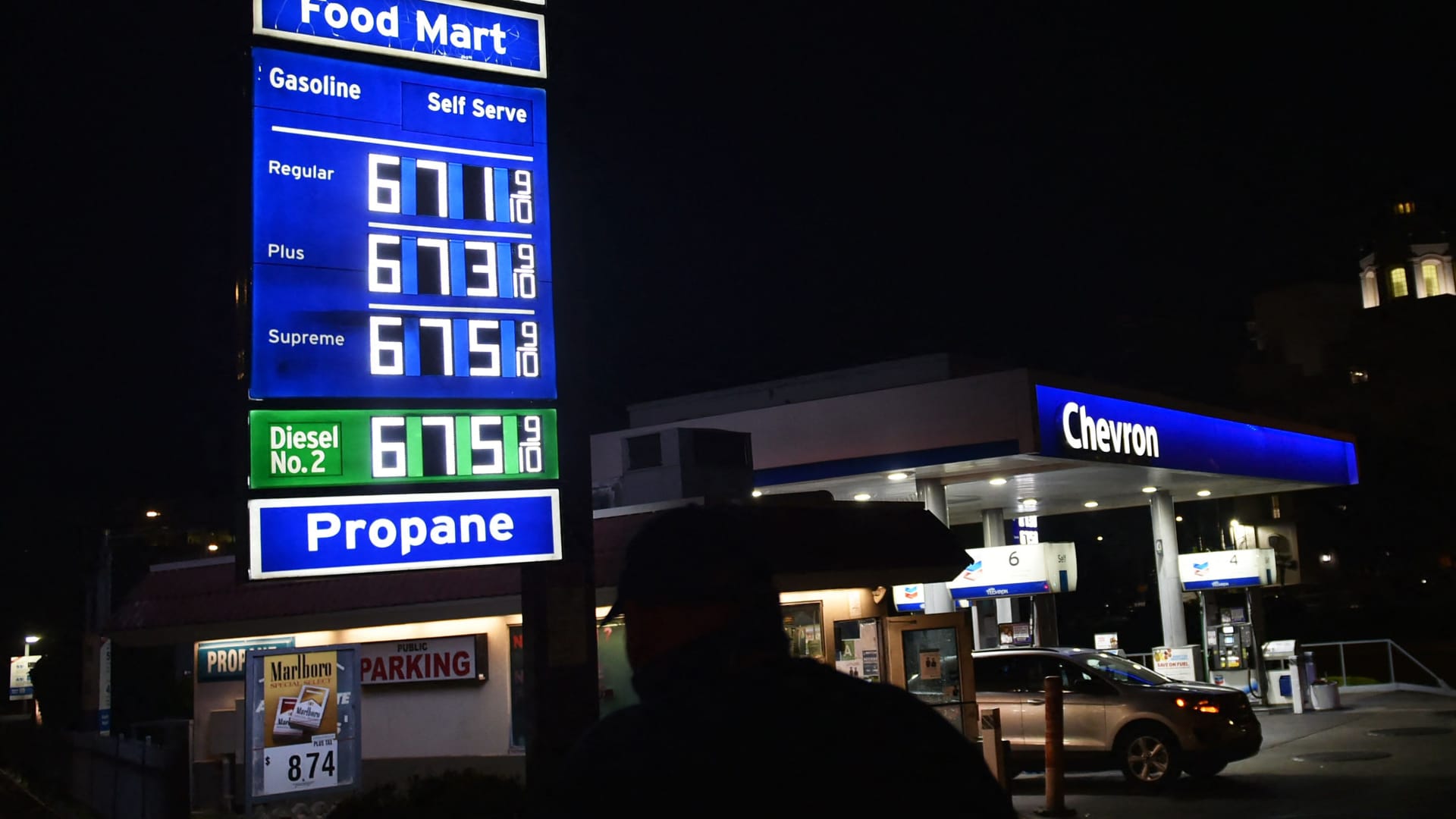Diesel prices are surging, contributing to inflationary headwinds due to the fuel’s vital role in the American and global economy. Tankers, trains, trucks and planes all run on diesel. The fuel is also used across industries including farming, manufacturing, metals and mining.
“Diesel is the fuel that powers the economy,” said Patrick De Haan, head of petroleum analysis at GasBuddy. Higher prices are “certainly going to translate into more expensive goods,” he said, since these higher fuel costs will be passed along to consumers. “Especially at the grocery store, the hardware store, anywhere you shop.”
In other words, the impacts will be felt across the economy.
Diesel’s surge
The jump in prices comes on the heels of growing demand as economies around the world get back to business. This, in turn, has pushed inventories to historic lows. Products like diesel, heating oil and jet fuel are known as “middle distillates,” since they are made from the middle of the boiling range when oil is turned into products.
U.S. distillate inventory is now at the lowest level in more than decade. The move is even more extreme on the East Coast, where stockpiles are at the lowest since 1996. Diesel and jet fuel at New York harbor are now trading well above $200 per barrel, according to UBS.
Europe’s move away from dependency on Russian energy is hastening the rapid price appreciation. The bloc currently imports around 700,000 barrels per day of diesel from Russia, according to Stephen Brennock at brokerage PVM.
“[T]he tightness in global supply will be exacerbated by the EU’s proposal to ban Russian oil imports,” he said. “The ban, if approved, will have an outsized impact on product markets and especially diesel….There is now growing anxiety that Europe might run out of diesel.”
Energy consultancy Rystad echoed this point, saying that the loss of Russian refined products is going to make diesel shortages in Europe “more acute.”
Refiners can’t just ramp up output to meet surging demand, and utilization rates are already above 90%. In the U.S., refining capacity has decreased in recent years. The largest refining complex on the East Coast — Philadelphia Energy Solutions — shut down following a fire in June 2019.
Several refiners are now being reconfigured to make biofuel, which has also reduced capacity.
Some refiners are also undergoing routine maintenance checks that were overdue following the pandemic. These facilities typically run flat out – 24 hours a day, seven days a week – and so at some point the machinery needs to be checked.
The East Coast relies heavily on other areas of the country for refined products, De Haan said. Now, Europe is competing for these same fuels as it turns away from Russia.
‘Unmoored’ prices
A common saying in commodity markets is “the cure for high prices is high prices.” But that might not be the case this time around. According to UBS, distillate demand tends to be less elastic than gasoline prices.
In other words, while high prices at the pump might deter consumers, if a business needs to get goods from point A to point B, it’s going to pay those higher prices.
Tom Kloza, head of global energy research at OPIS, said that in years past a barrel of diesel typically sold for $10 above the price of crude oil. Today, that differential – known as the crack spread – has surged to a record high above $70.
“It’s become untethered, unmoored, a little bit unhinged. These are prices we’re not used to seeing,” he said, adding that there are large price differences across the U.S.
Kloza said diesel at New York harbor is now trading around $5 per gallon, while jet fuel prices at the harbor, which usually mirrors diesel prices, are around $6.72. That equates to roughly $282 per barrel.
“These are numbers that are not just off the charts. They’re off the walls, out of the building, and maybe out of the solar system,” he said.
Retail diesel prices are also surging. On Friday the national average for a gallon hit a record of $5.51, according to AAA, after hitting a new high every single day over the last week.
Higher diesel prices is translating to higher profit margins for refiners, who are now incentivized to make as much as they possibly can. At a certain point, this could lead to tightness in the gasoline market, pushing up the high prices consumers are already seeing at the pump.
In the meantime, consumers can expect prices for goods to keep on climbing.
“It’s going to be a double whammy on consumers in the weeks and months ahead as these diesel prices trickle down to the cost of goods — another piece of inflation that’s going to hit consumers,” GasBuddy’s De Haan said, adding that the full impact of the recent surge in prices has yet to be felt.
